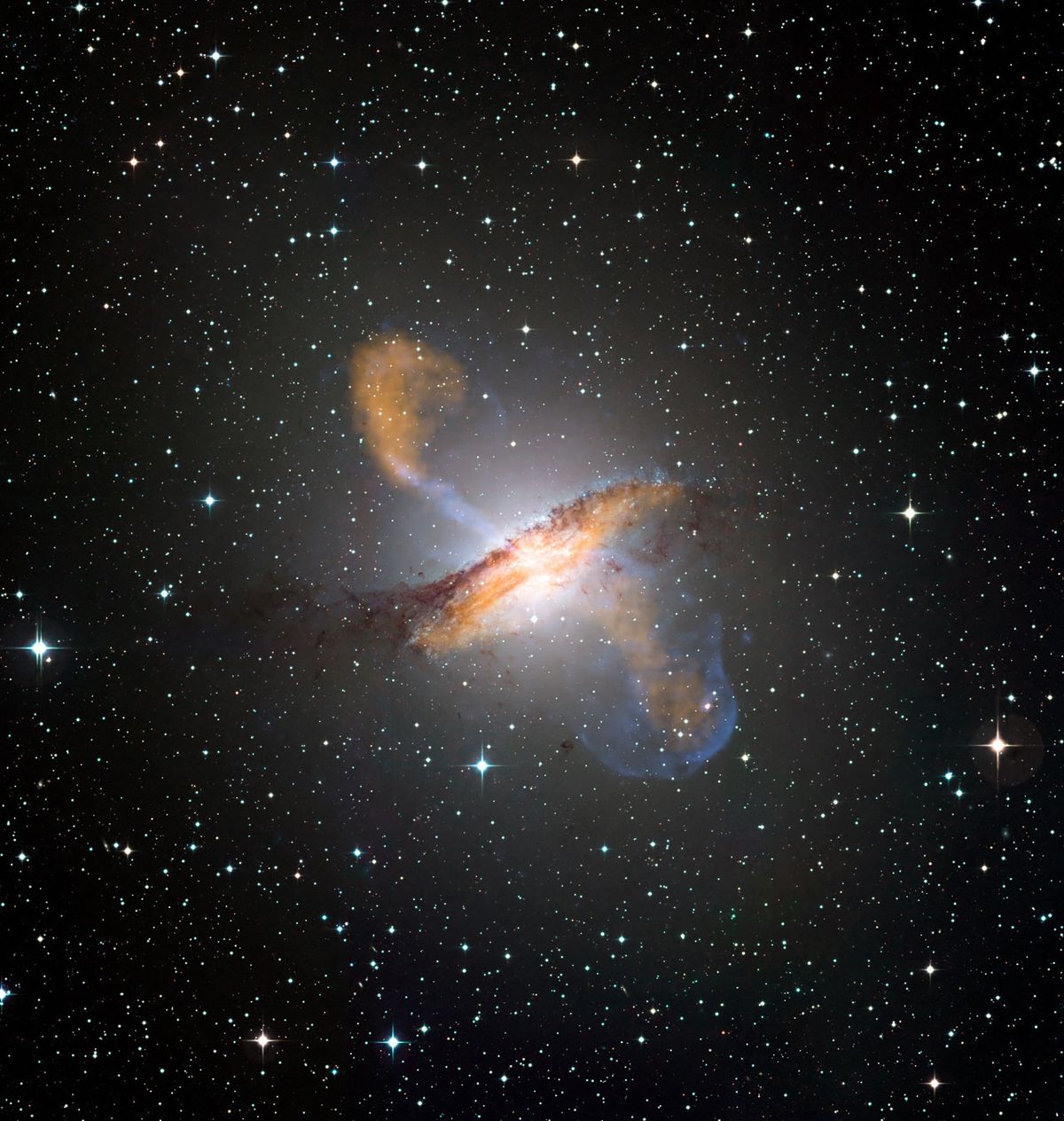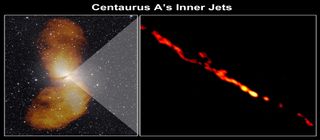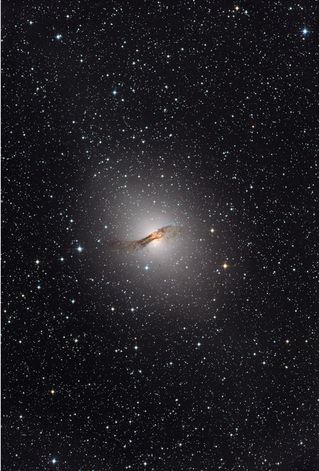Giant Black Hole's Massive Jets Get Extreme Close-Up in New Photo

Energetic jets spewed forth from a galaxy's supermassive black hole got a close-up in their most detailed image ever taken by Earth radio telescopes.
The picture shows jets racing away at one-third the speed of light from a huge black hole weighing 55 million times the sun's mass. Most matter falling toward a black hole becomes trapped, but some matter at the base of the jets gets ejected outward at about one-third the speed of light. In this case, the black hole sits at the center of the Centaurus A galaxy. [Video: Best Ever View of Black Hole's Jets]
"These jets arise as infalling matter approaches the black hole, but we don't yet know the details of how they form and maintain themselves," said Cornelia Mueller, the study's lead author and a doctoral student at the University of Erlangen-Nuremberg in Germany.
The matter in the jets has created a pair of giant radio-emitting lobes that each stretch almost a million light-years long. That makes the Centaurus A galaxy appear almost 20 times the size of a full moon when seen in radio waves, despite being 12 million light-years away from Earth. [Photo of the Black Hole Jets of Centaurus A]

Astronomers combined the power of nine radio telescopes scattered across Earth's southern hemisphere to take the most detailed image yet of the jets. The team works under the TANAMI (Tracking Active Galactic Nuclei with Austral Milliarcsecond Interferometry) project.
The new image shows an area less than 4.2 light-years across, or shorter than the distance between our sun and its nearest star. The image resolution allows researchers to make out radio-emitting features as small as 15 light-years across. [Gallery: Black Holes of the Universe]
"Advanced computer techniques allow us to combine data from the individual telescopes to yield images with the sharpness of a single giant telescope, one nearly as large as Earth itself," said Roopesh Ojha at NASA's Goddard Space Flight Center in Greenbelt, Md.
Sign up for the Live Science daily newsletter now
Get the world’s most fascinating discoveries delivered straight to your inbox.

Such data could go a long way toward solving the mystery of the outbound jets, which may change a galaxy's rate of star births by mixing it up with surrounding gas. Astronomers still struggle to pinpoint the jets' role in the formation and evolution of galaxies.
But radio waves don't represent the end of the story for the black hole. Much higher-energy radiation in the center of Centaurus A has also shown up in the eyes of NASA's Fermi Gamma-ray Space Telescope.
"This radiation is billions of times more energetic than the radio waves we detect, and exactly where it originates remains a mystery," said Matthias Kadler at the University of Wuerzburg in Germany and a collaborator of Ojha. "With TANAMI, we hope to probe the galaxy's innermost depths to find out."
This story was provided by SPACE.com, a sister site to LiveScience. Follow SPACE.com for the latest in space science and exploration news on Twitter @Spacedotcom and on Facebook.













